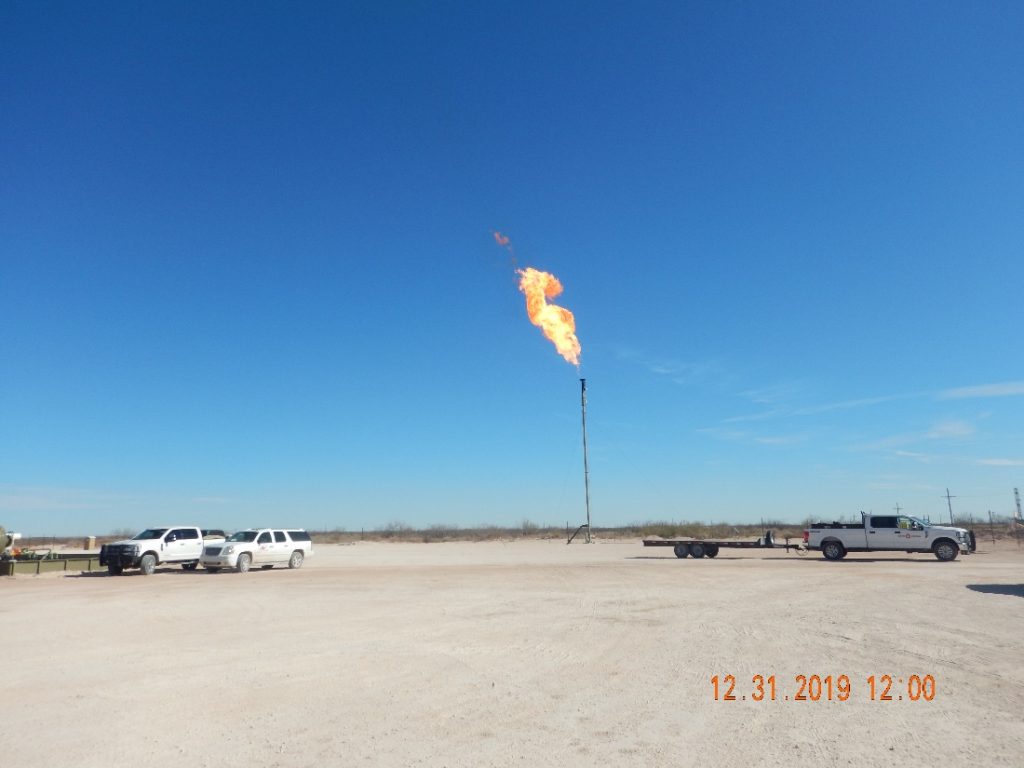New Mexico rivers are the most endangered in the country, according to the annual report from American Rivers.
This is because of two U.S. Supreme Court rulings, notably including Sackett v. U.S. Environmental Protection Agency, in which the court stripped protections from the vast majority of waterways in the state.
Matt Rice, the southwest regional director of American Rivers, explained that the court ruling “removed federal protections for some smaller streams, rivers and wetlands throughout the United States.”
The court ruling scaled back waterways subject to protections under the Clean Water Act, limiting them to perennial rivers and wetlands that have a continuous surface connection with a river that flows nearly all the time.
Related: Environmental advocacy groups decry SCOTUS Clean Water Act ruling
That means a handful of New Mexico rivers such as the Rio Grande, the San Juan and the Pecos are still protected under the Clean Water Act, though they could themselves be impacted by some of the wetlands and ephemeral waterways that lost their protections due to the court ruling.
A previous Supreme Court ruling from 2006, Rapanos v. United States stripped federal protections from the waters in closed basins, which represent 20 percent of the land area in New Mexico.
In its endangered rivers report, American Rivers states that the Rapanos and Sackett rulings “fly in the face of established science and ignore the value that small streams and wetlands have to their broader watersheds, communities, and economies, particularly in places with dry climates like New Mexico.”
“While the threat to New Mexico’s rivers and streams and wetlands is particularly acute, it’s also kind of an analogue for the rest of the Southwest states and even the rest of the country,” Rice said.
New Mexico is unique for a few reasons. It is an arid state where the majority of waters are ephemeral, meaning they don’t flow year round. Additionally, it is one of three states that defers to the federal government for permitting.
“Those states that have existing state programs at least have some level of state protection, permitting protection from pollution from development, things that harm rivers, streams and wetlands,” he said.
Because it does not have a state permitting program, projects like wastewater treatment plants, mines, industrial sites and other development projects may no longer be required to obtain permits intended to protect waterways and wetlands.
While New Mexico doesn’t have that existing permitting program, Rice said that residents and elected leaders have a deep commitment to protect its waters. He said Gov. Michelle Lujan Grisham expressed concern following the Sackett decision and has said she is committed to developing a state permitting program.
Related: Surface water permitting may help fill gaps left after SCOTUS ruling
The New Mexico Environment Department has already taken steps to establish a permitting program and the legislature appropriated $7.6 million this year to help in that effort.
New Mexico also has a “Waters of the State” definition that is more comprehensive than the federal “Waters of the United States” definition. That means when a state program is established and funded, it will be able to protect all of New Mexico’s waterways, including the isolated wetlands and small streams, according to American Rivers.
Rice said the ranking is more than just a story about the threat that waters face due to the Sackett decision, it’s also a story of how states can respond.
“New Mexico is a great example of doing things the right way,” he said.
Rice said, to the best of his knowledge, this is the first time in the 40-year history of the most endangered rivers list that American Rivers has chosen to list all the rivers in a single state as endangered. He explained that the Sackett decision places 96 percent of the rivers in New Mexico at risk.
The organization ranks endangered rivers based on various criteria including whether a major decision that the public can help influence in the coming year may impact the river. Additionally, American Rivers looks at the significance of the river both to people and nature and the magnitude of the threat that it faces.
According to American Rivers, the Sackett decision places clean water resources at risk in New Mexico and could impact wildlife habitat, recreation, agriculture and cultural resources.
Rice said American Rivers hopes the ranking demonstrates the public support for New Mexico’s efforts to establish a permitting program and keep it funded. He said establishing a clean water program in the state is a big ordeal and that not everyone will necessarily be on board with the efforts.
Tannis Fox, a senior attorney with the Western Environmental Law Center, expressed gratitude for American Rivers decision to rank New Mexico’s waters as the most endangered rivers in the country and expressed hope that it could “further galvanize public, legislative, and executive support for the state to fill the regulatory gap left in the wake of Sackett.”
“Protecting New Mexico’s most precious resource–our rivers, streams, and wetlands–is at a crossroad,” Fox said. “With the Supreme Court’s dismantling of Clean Water Act protections, it is now up to states to fully protect their waters.
Other rivers on the list
Big Sunflower and Yazoo Rivers of Mississippi
The two rivers are home to more than 450 species of birds, fish and other wildlife. They are also in a migration corridor known as the Mississippi Flyway. The area also boasts one of the last intact bottomland hardwood forests in the country, but it is threatened by a project known as Yazoo Backwater Pumps. The project dates back to 1941 and several phases have already been completed. Those involved building levees, floodgates and a channel. When the U.S. Army Corps of Engineers began looking to construct the final piece—flood pumps—in 2008, the EPA rejected it. Then, under President Donald Trump, that rejection was overridden and, in 2021, the Corps resurrected the project.
The idea behind the pumps is to reduce flooding in Mississippi’s South Delta, but American Rivers states that had the pumps been in place in 2019, 83 percent of the Yazoo Backwater lands would still have become inundated with water.
“Many local leaders and community members of color recognize that the pumps are a false promise that will not protect them from flooding,” the nonprofit states. “The Yazoo Pumps, that will likely cost federal taxpayers more than $1.4 billion, would provide little protection to homes in the sparsely populated area that the pumps are supposed to protect, and could increase flooding in downstream communities.”
At the same time, the pumps would reduce the amount of water and the amount of time that fish can spawn in an area that is already seeing reductions in aquatic life.
The Duck River of Tennessee
The Duck River is considered one of the most biodiverse rivers in the world, however development of some of the fastest growing communities in the region is placing increasing strain on the water supplies.
Both population growth and industry growth are demanding more and more water.
“Unsustainable overconsumption of water from the Duck threatens to drain the river during periods of low flow and drought,” American Rivers states. “This puts long-term water supply for local communities and the river’s aquatic inhabitants at risk.”
The Santa Cruz River in Arizona and Sonora, Mexico
The Santa Cruz River is a story of a comeback. Intensive groundwater withdrawals led to the river becoming a seasonal body of water in 1913. Then, by 1940, those seasonal flows ceased. In the decades that followed, wastewater discharged into the streambed created dangerous conditions both for the ecosystem and human health.
Everything began to turn around in 2008 when the wastewater treatment facilities began receiving upgrades. Now these facilities provide about 35 miles of perennial flow.
But that doesn’t mean the Santa Cruz is out of danger.
“As an effluent-dominated river, the Santa Cruz is reliant on consistent source water, and in Tucson, that water comes from the import of Colorado River water,” American Rivers states.
As those water supplies dwindle due to climate change and overuse, so could flows in the Santa Cruz.”
American Rivers is encouraging the U.S. Fish and Wildlife Service to establish an urban wildlife refuge to protect the Santa Cruz River.
The Little Pee Dee River of South Carolina
The Little Pee Dee River has not had dams installed and remains both free-flowing and unaltered. That makes it an important resource for inland fisheries. It boasts numerous streams, sloughs, oxbow lakes and cypress gum swamps including remote swamplands where bald cypress trees grow along with other hardwoods. The river’s surroundings also include sandhills and bluffs that shelter breeding and migratory waterfowl.
A proposed interstate that would cross the river and cut through the Little Pee Dee Heritage Preserve could destroy wetlands and wildlife habitat while also impacting the river’s health and increasing the risk of flooding in disadvantaged communities, according to American Rivers.
The Farmington River in Connecticut and Massachusetts
A dam threatens the continued success of efforts to protect the Farmington River as a world-class fishing and recreation destination that provides a home for migratory fish, according to American Rivers.
The Rainbow Dam is a small hydropower dam that dates back to the early 20th century. American Rivers says a quirk of law means the Rainbow Dam has no federal oversight. That lack of federal oversight and the limited state jurisdiction meant that the dam’s fishway was both inadequate and outdated and, before the fishway was shutdown in 2023, often resulted in fish deaths. This essentially rendered more than 95 percent of the river’s habitats inaccessible to animals like the sea lamprey and the river herring. Additionally, American Rivers says the dam has led to algal blooms that endanger human health.
The Trinity River of California
Up until 2000, the Central Valley Water Project diverted 90 percent of the Trinity River into the Sacramento River. That changed with a Record of Decision that allows for nearly half of the Trinity’s water to stay in its watershed, but it does not provide what American Rivers describes as meaningful protections for cold water reservoir storage. The state’s water right policies have not been updated to recognize Indigenous water rights.
“Consequently, Biological Opinions enacted during the Trump administration have led to reservoir depletion, rising river temperatures, and other environmental impacts that put threatened coho salmon and chinook salmon at risk,” American Rivers states. “Currently the Tribes are also dealing with some of the lowest salmon returns in history and toxic algae outbreaks, which impacts their cultural use, food security, wellness and livelihoods.”
The Kobuk River of Alaska
A proposed road that would require “thousands of crossings over streams, rivers and wetlands” could impact water quality, damage permafrost and impact caribou migration, according to American Rivers.
“It is hard to overestimate the impact of this proposed road on the Kobuk River,” the nonprofit states. “The Kobuk River currently has no road connections to the rest of the world, which would make the Ambler Road the first to access what has remained a remote region up until now. The land, fish, and wildlife in the Kobuk River watershed are as pristine as can be found in the modern world.”
The Tijuana River in California and Mexico
Toxic waste and raw sewage have flowed into the river’s watershed for more than a century, which has led to health problems for both nearby residents and wildlife. The pollution impacts water, air and soil.
“When it rains, the high volume of water and pollution overwhelms regional infrastructure and creates dangerous conditions for the natural environment and local communities in the U.S. and Mexico,” American Rivers states.
The Blackwater River of West Virginia
The Blackwater River is unique in part due to its amber color, which comes from the tannins from spruce and hemlock trees. The river also boasts whitewater rapids that draw rafting and kayaking enthusiasts to the eight-mile-long Blackwater Canyon. The riparian corridor is home to the endangered Cheat Mountain salamander as well as several bats and the rare West Virginia northern flying squirrel.
A potential route for a major four-lane highway would cut across all of the river’s headwater streams.
It would also cross the site of a former strip mine that has not been reclaimed. The strip mine also has a honeycomb of mine tunnels filled with acid mine drainage pollution beneath it.
“Construction in this area would be a recipe for disaster for water quality and stability of structures as mine tunnels collapse and spill polluted water into the river,” American Rivers states.





















